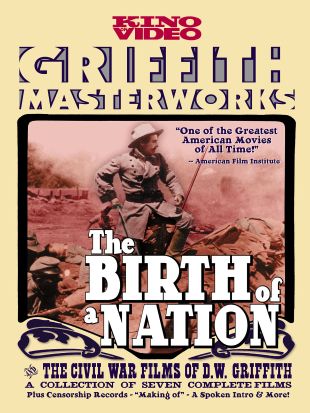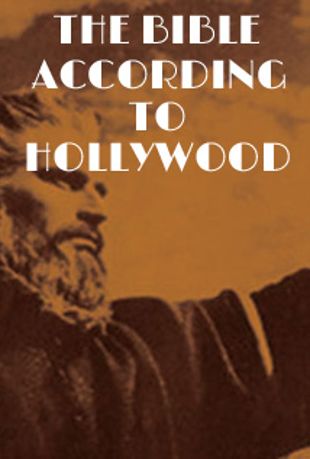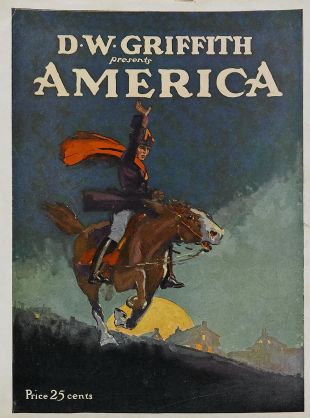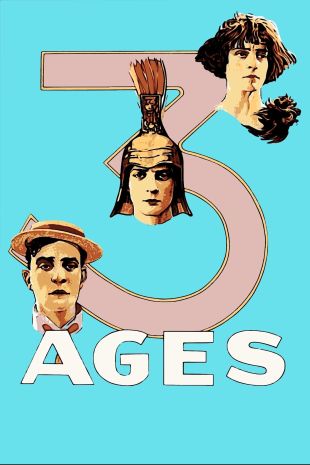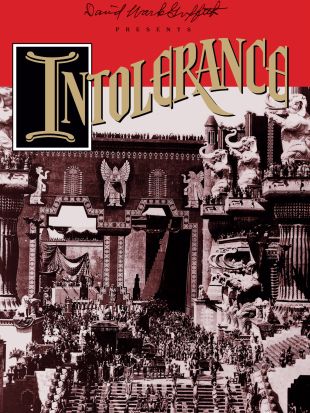
Intolerance (1916)
Directed by D.W. Griffith
Genres - Drama, War, Crime, Spirituality & Philosophy |
Sub-Genres - Historical Epic, Melodrama |
Release Date - Sep 4, 1916 (USA) |
Run Time - 197 min. |
Countries - United States |
MPAA Rating - NR
Share on
Synopsis by Hal Erickson
Sometime during the shooting of the landmark The Birth of a Nation, filmmaker D.W. Griffith probably wondered how he could top himself. In 1916, he showed how, with the awesome Intolerance. The film began humbly enough as a medium-budget feature entitled The Mother and the Law, wherein the lives of a poor but happily married couple are disrupted by the misguided interference of a "social reform" group. A series of unfortunate circumstances culminates in the husband's being sentenced to the gallows, a fate averted by a nick-of-time rescue engineered by his wife. In the wake of the protests attending the racist content of The Birth of a Nation, Griffith wanted to demonstrate the dangers of intolerance. The Mother and the Law filled the bill to some extent, but it just wasn't "big" enough to suit his purposes. Thus, using The Mother and the Law as merely the base of the film, Griffith added three more plotlines and expanded his cinematic thesis to epic proportions. The four separate stories of Intolerance are symbolically linked by Lillian Gish as the Woman Who Rocks the Cradle ("uniter of the here and hereafter"). The "Modern Story" is essentially The Mother and the Law; the "French Story" details the persecution of the Huguenots by Catherine de Medici (Josephine Crowell); the "Biblical Story" relates the last days of Jesus Christ (Howard Gaye); and the "Babylonian Story" concerns the defeat of King Belshazzar (Alfred Paget) by the hordes of Cyrus the Persian (George Siegmann).
Rather than being related chronologically, the four stories are told in parallel fashion, slowly at first, and then with increasing rapidity. The action in the film's final two reels leaps back and forth in time between Babylon, Calvary, 15th century France, and contemporary California. Described by one historian as "the only film fugue," Intolerance baffled many filmgoers of 1916 -- and, indeed, it is still an exhausting, overwhelming experience, even for audiences accustomed to the split-second cutting and multilayered montage sequences popularized by Sergei Eisenstein, Orson Welles, Jean-Luc Godard, Joel Schumacher, and MTV. On a pure entertainment level, the Babylonian sequences are the most effective, played out against one of the largest, most elaborate exterior sets ever built for a single film. The most memorable character in this sequence is "The Mountain Girl," played by star on the rise Constance Talmadge; when the Babylonian scenes were re-released as a separate feature in 1919, Talmadge's tragic death scene was altered to accommodate a happily-ever-after denouement. Other superb performances are delivered by Mae Marsh and Robert Harron in the Modern Story, and by Eugene Pallette and Margery Wilson in the French Story. Remarkably sophisticated in some scenes, appallingly naïve in others, Intolerance is a mixed bag dramatically, but one cannot deny that it is also a work of cinematic genius. The film did poorly upon its first release, not so much because its continuity was difficult to follow as because it preached a gospel of tolerance and pacifism to a nation preparing to enter World War I. Currently available prints of Intolerance run anywhere from 178 to 208 minutes; while it may be rough sledding at times, it remains essential viewing for any serious student of film technique.
Characteristics
Moods
Themes
Keywords
intolerance, inhumanity, injustice, massacre, crucifixion, discrimination, mother
Attributes
High Artistic Quality, High Budget, High Historical Importance, High Production Values
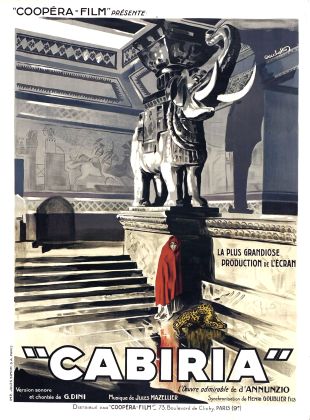
_Poster.jpg)




